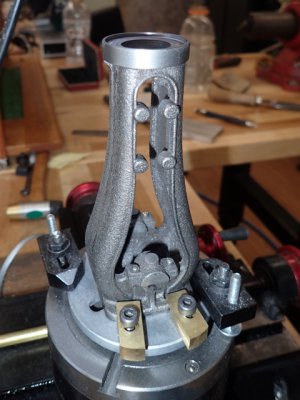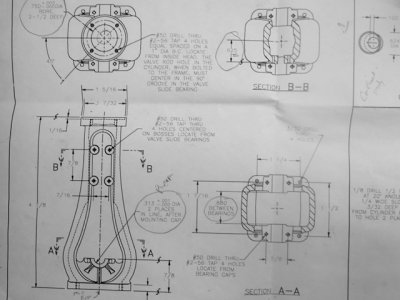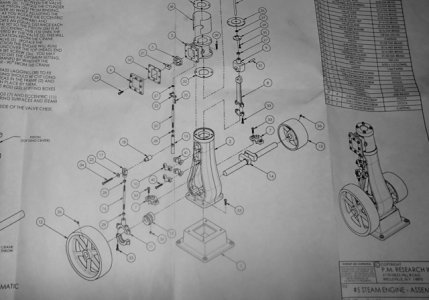- Joined
- Jan 24, 2015
- Messages
- 239
Dear All,
I am using the expanding mandrel idea in a current project. However, said idea is, when applied, less than solid. I am trying to hold a piece with a 3/4" bore. The piece is a small CI steam engine frame. My tool is a Sherline lathe (3.5 x 17).
So:
1) What are good vs bad metals to use for mandrels, given the size of the problem?
2) What is the most expansion one should target (as a proportion of diameter)?
3) What is the best way of getting expansion?
-How do you actually design you mandrel to expand? If using NPT taps and fittings, how do you judge depth of hole, depth of tap, distances, etc?
Thanks,
Tom
I am using the expanding mandrel idea in a current project. However, said idea is, when applied, less than solid. I am trying to hold a piece with a 3/4" bore. The piece is a small CI steam engine frame. My tool is a Sherline lathe (3.5 x 17).
So:
1) What are good vs bad metals to use for mandrels, given the size of the problem?
2) What is the most expansion one should target (as a proportion of diameter)?
3) What is the best way of getting expansion?
-How do you actually design you mandrel to expand? If using NPT taps and fittings, how do you judge depth of hole, depth of tap, distances, etc?
Thanks,
Tom




